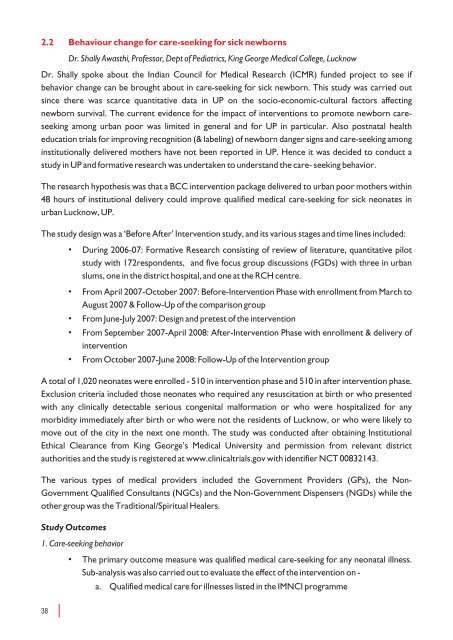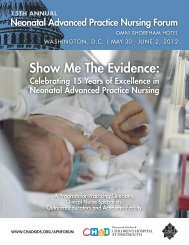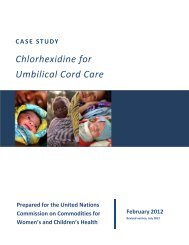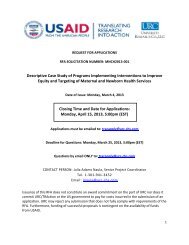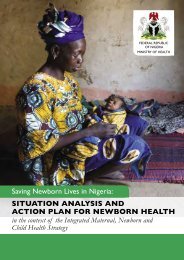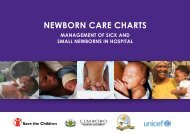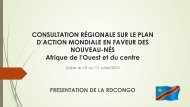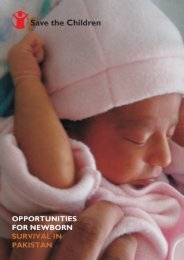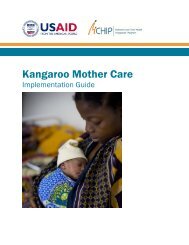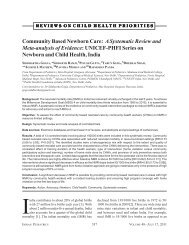Download Resource - Healthy Newborn Network
Download Resource - Healthy Newborn Network
Download Resource - Healthy Newborn Network
Create successful ePaper yourself
Turn your PDF publications into a flip-book with our unique Google optimized e-Paper software.
2.2 Behaviour change for care-seeking for sick newbornsDr. Shally Awasthi, Professor, Dept of Pediatrics, King George Medical College, LucknowDr. Shally spoke about the Indian Council for Medical Research (ICMR) funded project to see ifbehavior change can be brought about in care-seeking for sick newborn. This study was carried outsince there was scarce quantitative data in UP on the socio-economic-cultural factors affectingnewborn survival. The current evidence for the impact of interventions to promote newborn careseekingamong urban poor was limited in general and for UP in particular. Also postnatal healtheducation trials for improving recognition (& labeling) of newborn danger signs and care-seeking amonginstitutionally delivered mothers have not been reported in UP. Hence it was decided to conduct astudy in UP and formative research was undertaken to understand the care- seeking behavior.The research hypothesis was that a BCC intervention package delivered to urban poor mothers within48 hours of institutional delivery could improve qualified medical care-seeking for sick neonates inurban Lucknow, UP.The study design was a ‘Before After’ Intervention study, and its various stages and time lines included:• During 2006-07: Formative Research consisting of review of literature, quantitative pilotstudy with 172respondents, and five focus group discussions (FGDs) with three in urbanslums, one in the district hospital, and one at the RCH centre.• From April 2007-October 2007: Before-Intervention Phase with enrollment from March toAugust 2007 & Follow-Up of the comparison group• From June-July 2007: Design and pretest of the intervention• From September 2007-April 2008: After-Intervention Phase with enrollment & delivery ofintervention• From October 2007-June 2008: Follow-Up of the Intervention groupA total of 1,020 neonates were enrolled - 510 in intervention phase and 510 in after intervention phase.Exclusion criteria included those neonates who required any resuscitation at birth or who presentedwith any clinically detectable serious congenital malformation or who were hospitalized for anymorbidity immediately after birth or who were not the residents of Lucknow, or who were likely tomove out of the city in the next one month. The study was conducted after obtaining InstitutionalEthical Clearance from King George’s Medical University and permission from relevant districtauthorities and the study is registered at www.clinicaltrials.gov with identifier NCT 00832143.The various types of medical providers included the Government Providers (GPs), the Non-Government Qualified Consultants (NGCs) and the Non-Government Dispensers (NGDs) while theother group was the Traditional/Spiritual Healers.Study Outcomes1. Care-seeking behavior• The primary outcome measure was qualified medical care-seeking for any neonatal illness.Sub-analysis was also carried out to evaluate the effect of the intervention on -a. Qualified medical care for illnesses listed in the IMNCI programme38


